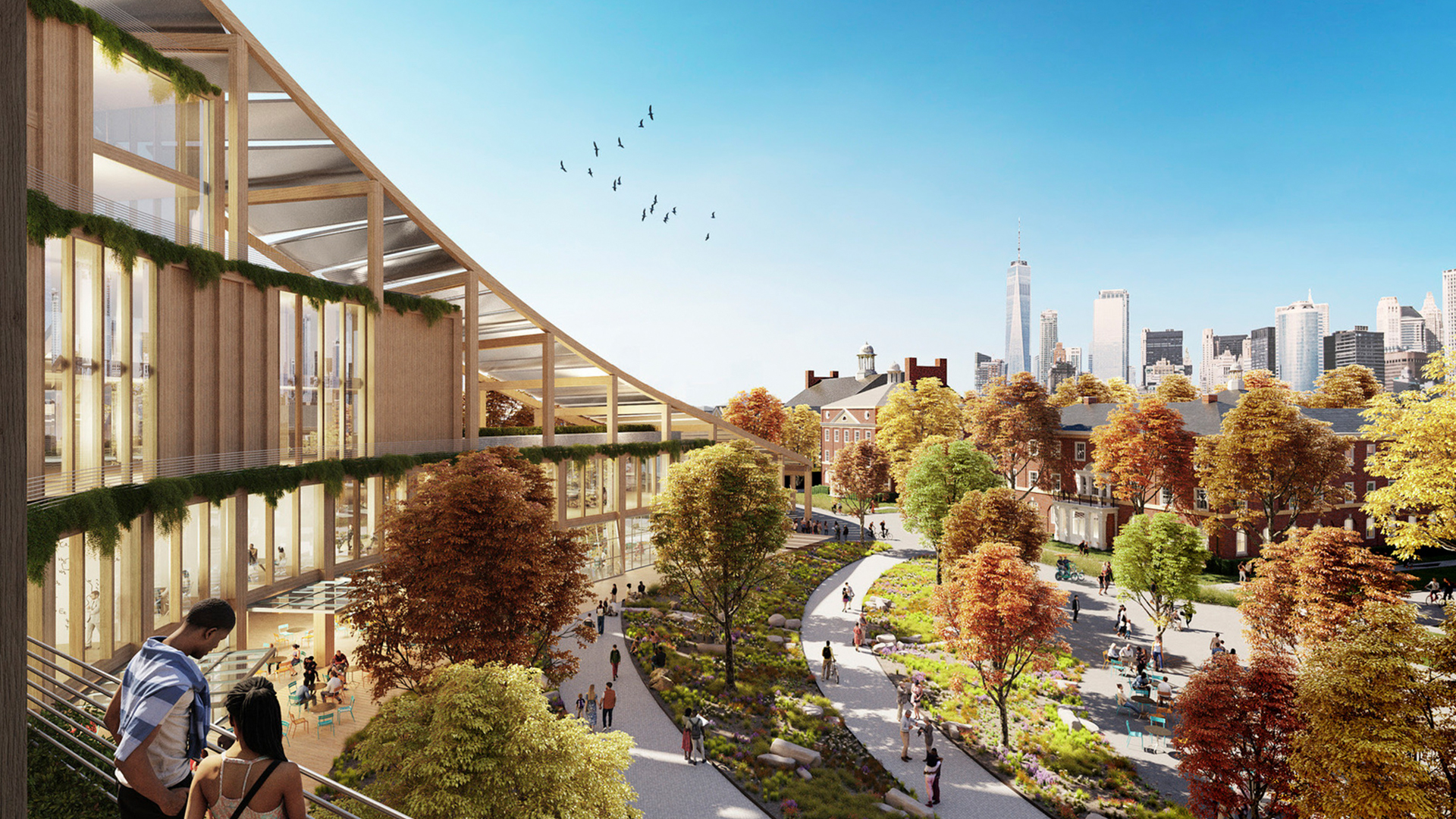
New York City has more than its share of nicknames. The Big Apple. The city that never sleeps. Gotham. As of late last year, it can add one more: City of Yes.
That, at least, is the tagline applied to a suite of reforms pushed by Mayor Eric Adams to combat the city’s housing crisis, in the most significant update to the city’s zoning code since 1961.
First proposed three years ago, the package of regulatory tweaks has garnered the most headlines for its potential to allow property developers to add 80,000 new units to the city’s housing stock over the next 15 years. Second, there are also provisions to stimulate new commercial development and adopt more green infrastructure.
The City Council approved the hotly debated package in December, although neighbourhood associations and civic groups opposed to the idea have filed lawsuits that could delay implementation of parts of the plan for years.
Meanwhile, Adams is facing a tough election in November against Democratic nominee Zohran Mamdani, who won a primary election in June by campaigning on cost of living. The self-proclaimed democratic socialist is generally warm to City of Yes as one of its intended outcomes is to make New York more affordable, but he also envisions a broader role for the public sector in building and maintaining housing stock. His controversial proposal to freeze rents has also sparked concerns in the real estate sector.
While the full extent of City of Yes won’t be clear until legal challenges are resolved, its effect is already being felt in some corners of the city. For example, hypothetical office-to-residential conversions that were previously illegal are now on the table. Above all, the political consensus that led to its passage is a watershed moment for New York as it tackles certain third rails around issues like parking requirements and adding density in the city’s more suburban precincts.
What this means for surveyors, meanwhile, is an opportunity, as building at the scale that New York City proposes will require additional skills and talent. That, at least, is the view of Francisco Pineda FRICS, former executive vice president at NYC Economic Development Corporation.
“At the core of City of Yes is a pathway for private and public partnerships to be able to fund the development of new inventory,” he says. “I don't see that happening without a more methodical and robust RICS-like quantity surveying set of standards.”
Yes to what?
In the popular imagination, New York City is largely synonymous with the downtown and midtown skylines. But the island of Manhattan is just one of five boroughs, and the smallest by land area. Queens is five times the size of Manhattan, yet has only one-third the population density. What that translates to are vast tracts of low-slung neighbourhoods, effectively single-family houses often with garages, gardens and drives.
It’s in these neighbourhoods that planners and pro-housing activists see significant scope to grow New York City’s available housing stock at a time when the city is facing a historic crunch. A municipal report released in April, The Housing Crisis and New York City, noted: “Since 1960, New York City has been in a declared ‘Housing Emergency,’ defined as when the vacancy rate is below 5%. Today, the city suffers from a net rental vacancy rate of 1.4% – lower than almost any time since that emergency was declared.”
Where, then, to build? The problem, says Moses Gates, vice president for housing and neighborhood planning at the Regional Plan Association, is that “New York is a largely built-out city without a lot of vacant land, without even a lot of underutilised land. And especially not a lot of vacant and underutilised land near transit that does not take an enormous amount of money to make it a feasible development site.”
In other words, New York has run out of space to build like it did in its heyday – the city added more housing units in the 1920s than it did from the 1970s-2010s combined. There are also fewer, if any, large industrial sites left for marquee development projects like Long Island City, Hudson Yards or Pacific Park (formerly Atlantic Yards) that are measured in the millions of square feet and thousands of units. Instead, the city’s best chance to accommodate more New Yorkers will come piecemeal, adding an accessory dwelling unit here and a density bonus over a storefront there.
“You're looking at getting that growth through a more Tokyo-like paradigm, with a lot of small and mid-range buildings rather than a few giant buildings,” says Gates. And that type of development, until now, has been largely illegal in farther-flung neighbourhoods across the vast city.
Not that there won’t be any giant buildings – as mentioned above, relaxing the rules on where office-to-residential conversions can take place that could transform parts of Midtown Manhattan into more of a neighbourhood where people live, not just work.
But now there is the possibility of erecting three-to-five-storey apartment buildings in vast swathes of the city that have been effectively unchanged since they were first developed in the middle of the last century. This is why planners are excited that New York is finally turning a corner, albeit with a long road ahead.
“City of Yes takes a chunk out of the problem,” says Gates, “But it is not close to a comprehensive solution.”
“I don't see that happening without a more methodical and robust RICS-like quantity surveying set of standards” Francisco Pineda FRICS, The New School

Aerial photo of the rows of low-slung buildings in Jackson Heights, Queens, New York.
Boon for surveyors
Five years after the COVID-19 pandemic brought New York to its knees, the city is booming again. Last year the city added almost 34,000 new homes, its largest single-year figure since 1965, and City of Yes will keep that pace at a high bar. There are also other major initiatives affecting the built environment like the Metropolitan Transportation Authority’s recently adopted $65bn capital plan and the ongoing Gateway Tunnel Project to add rail capacity beneath the Hudson River.
Pineda insists that New York is open for business in the building sector – and needs help. By some estimates, there will be 10,000-20,000 new architecture, engineering and construction (AEC) jobs annually because of these initiatives.
“You're going to see a lot of demand for technical talent, a lot of which is going to have to be brought in from abroad,” he says. “We just don't have the manpower to be able to address this collective group of infrastructure jobs and any new housing developments that the City of Yes spurs on.”
What’s more, Pineda believes that the quantity surveyor skillset, while not historically a major part of US building practices, is increasingly coming into vogue. He cites the rise over the last five years of “precon” in planning for NYC building projects as analogous to quantity surveying.
“It's an iterative form of doing a rough order of magnitude buildup of your estimates, reiterating the value engineering process, reflecting those in the plans, going back into the market, and then re-estimating out your costs,” he explains.
City of Yes will create more entitlement allowances, such as transit-oriented development. Which means lenders and other counterparties like public sector entities providing subsidies will be much more methodical and systematic about demanding estimates from property developers.
“New York is a largely built-out city without a lot of vacant land, without even a lot of underutilised land” Moses Gates, Regional Plan Association
Political pushback
The goal of 80,000 additional new units of housing is relatively modest. But the myriad elements that combine to make up the City of Yes package upset a lot of apple carts. Especially in the more suburban neighbourhoods that are most resistant to change. In other words, the city’s most ardent NIMBYs.
One of the most politically fraught proposals was the elimination of parking minimums. Although the city centre is well-served by public transport and less than one-quarter of Manhattanites own personal vehicles, the car ownership rate ranges from 44% in Brooklyn to 84% in Staten Island. In the outer boroughs, the notion that all new developments would not come with parking spots was a political nonstarter. The final compromise was a three-tier system that eliminated requirements in most of Manhattan and central Brooklyn and Queens, as well as reduced mandates by 50-75% in other areas well served by public transport. Previously, zoning rules required on average 43 parking spots for every 100 new housing units.
But the larger objection was over the right to build so-called non-contextual developments, which don’t match the floor-area ratio and height of the surrounding building stock. As written, City of Yes creates opportunities to build a few storeys higher than existing structures – a three-storey apartment building might arise next to a one-storey house, for example.
For decades, contextual development has been sacrosanct in the outer boroughs and largely shielded them from any major change to the built environment. By applying zoning changes citywide, City of Yes is perceived as a threat across dozens of neighbourhoods that have organised politically and legally to fight.
“This is a battleground in our neighborhoods … but we will win this because we are right,” City council member Bob Holden told the Queens Eagle. “We have the right to feel the sun in our backyards, because we chose that when we bought our homes, we said we want to have sun, we don't want to have skyscrapers, we're not Manhattan.”


